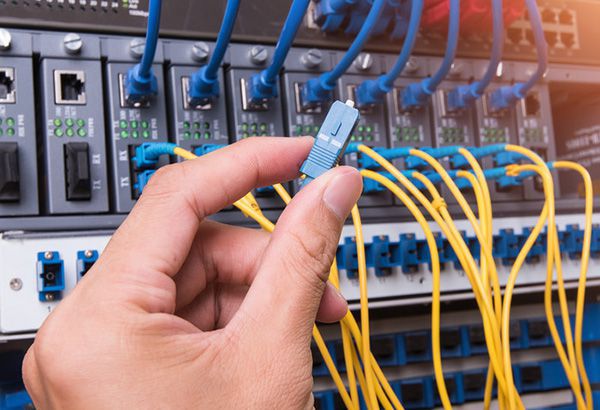Optical fiber cable is a revolutionary technology that has transformed the way we transmit data. With its ability to transmit information at incredible speeds and over long distances, optical fiber cable has become a key component of modern communication networks. However, like any technology, it has its own set of advantages and disadvantages. In this article, we will explore the advantages and disadvantages of optical fiber cable.
Advantages of Optical Fiber Cable:
High-Speed Data Transmission: One of the major advantages of optical fiber cable is its ability to transmit data at extremely high speeds. Compared to traditional copper cables, which are limited in terms of bandwidth, optical fiber cable can carry large amounts of data over long distances without losing signal strength or quality. This makes it ideal for applications that require high-speed data transmission, such as video streaming, online gaming, and cloud computing.
Long-Distance Transmission: Optical fiber cable can transmit data over much longer distances compared to copper cables. Since the data is transmitted using light signals, it experiences minimal signal degradation, allowing for reliable communication over hundreds of kilometers. This makes optical fiber cable an essential component for long-distance communication networks, including undersea cables and connections between different continents.
Immunity to Electromagnetic Interference: Unlike copper cables, which are susceptible to electromagnetic interference (EMI) and radio frequency interference (RFI), optical fiber cables are immune to these external disturbances. The use of light signals for data transmission eliminates the risk of signal loss or distortion caused by EMI/RFI, ensuring a more stable and reliable connection.

Security: Optical fiber cable provides enhanced security for data transmission. Since the signal is transmitted as light pulses, it is much more difficult to intercept or tap into compared to signals carried by copper cables. This makes optical fiber cable an ideal choice for organizations that require secure data transmission, such as government agencies, financial institutions, and healthcare providers.
Disadvantages of Optical Fiber Cable:
Installation and Maintenance Cost: One of the main disadvantages of optical fiber cable is its higher installation and maintenance cost compared to traditional copper cables. Optical fiber cable requires specialized equipment and expertise for installation, which can increase the overall cost of deploying a fiber optic network. Additionally, any damage or disruption to the cable requires skilled technicians to repair it, adding to the maintenance expenses.
Fragility: Optical fiber cables are delicate and more prone to physical damage compared to copper cables. They need to be handled with care during installation and maintenance to avoid breakages or micro-bending that can weaken the signal transmission. This fragility makes optical fiber cables less suitable for environments where cables may experience frequent bending, stretching, or crushing.
Limited Flexibility: Unlike copper cables, which are more flexible and can be easily bent around corners or sharp angles, optical fiber cables have limited flexibility. They require larger bending radii to prevent signal loss or damage to the cables' integrity. Consequently, installing optical fiber cables in tight spaces or navigating through existing infrastructure can be challenging.
Power Dependency: Unlike copper cables that can carry electricity along with data signals, optical fiber cables do not transmit electrical power. This means that devices connected via optical fiber cables need separate power sources, adding complexity to certain applications. Power needs to be supplied independently to the devices, which may require additional infrastructure or equipment.
Conclusion:
Optical fiber cable offers numerous advantages such as high-speed data transmission, long-distance capabilities, immunity to electromagnetic interference, and enhanced security. These benefits make it an indispensable technology for modern communication networks. However, optical fiber cable also has its share of disadvantages, including higher installation and maintenance costs, fragility, limited flexibility, and power dependency. Businesses and organizations need to carefully weigh these advantages and disadvantages when considering the adoption of optical fiber cable for their communication infrastructure. Overall, despite its drawbacks, the numerous advantages of optical fiber cable make it a compelling choice for high-speed and reliable data transmission.



